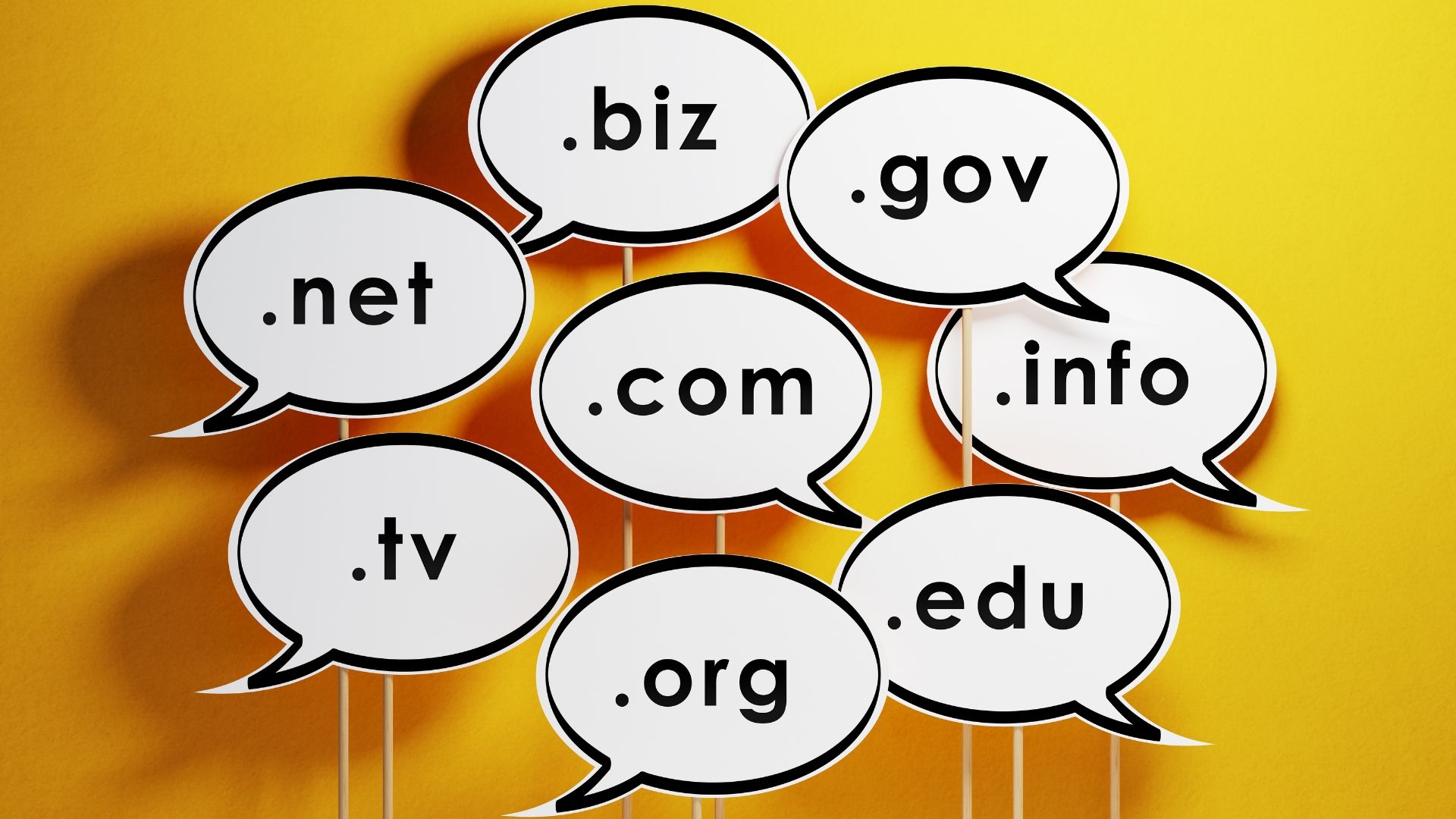Blog
True North Technologies Blog

For decades, business networking meant handshakes at conferences, passing out business cards, and scheduling coffee meetings. While those connections still matter, the landscape of networking has transformed. In the digital age, your next partnership, client, or growth opportunity might come not from a local event, but from a LinkedIn message, a social media post, or even an engaging piece of content on your website. At True North Technologies, we’ve seen firsthand how digital networking can open doors for businesses of every size. When used strategically, it doesn’t just expand your reach, it builds meaningful, lasting relationships that fuel long-term growth. Here’s how to make digital networking work for you. 1. Strengthen Your Digital Presence Before you can connect with others online, make sure your digital foundation is strong. Your website, social profiles, and digital listings are often the first impression people have of your business. Ask yourself: Does your website clearly communicate who you are and what you do? Is your branding consistent across all digital channels? Do your online profiles feel active, current, and authentic? Think of your digital presence as your virtual handshake. A polished, professional, and engaging online identity builds credibility, and that’s essential for any type of networking, digital or otherwise. 2. Use Social Media to Build Real Relationships Social media isn’t just for marketing, but it’s one of the most powerful networking tools available today. Platforms like LinkedIn, Instagram, and Facebook allow you to connect with industry peers, local businesses, and potential clients in a way that feels personal and authentic. Here’s the key: don’t just post — engage . Comment thoughtfully on others’ posts. Share valuable insights, not just promotional content. Send genuine messages to people you admire or want to collaborate with. When you consistently show up, contribute to conversations, and share your expertise, you naturally attract connections who align with your goals and values. 3. Create Content That Builds Trust In digital networking, content is currency . Blog posts, videos, podcasts, and newsletters all serve as tools for connection. By sharing useful, educational, or inspiring content, you position your business as a trusted resource and attract like-minded people who see value in what you do. Consider writing blog posts (like this one!) that answers common questions in your industry. Host webinars or short video tutorials that showcase your team’s expertise. Or share behind-the-scenes content that reveals your company’s culture and values. When your content reflects who you are and how you help others, it becomes a bridge to new business opportunities. 4. Leverage Digital Tools to Stay Connected Once you’ve built your network, maintaining those relationships is key. That’s where digital tools come in handy. Use a CRM (Customer Relationship Management) system to keep track of contacts and follow-ups. Schedule regular check-ins with clients or peers through email marketing or personalized messages. Attend virtual events and webinars to continue expanding your circle. At True North Technologies, we often help clients integrate these digital systems into their business strategy, automating outreach while keeping communication personal and authentic. It’s the best of both worlds: efficiency and connection. 5. Combine Digital and In-Person Networking Even in a digital-first world, human connection still matters most. The best approach is a balance between online networking and face-to-face interaction. Use digital channels to make initial introductions, then take those relationships offline when possible. Invite local contacts to meet in person, attend community events, or collaborate on shared projects. The goal isn’t just to collect contacts — it’s to build real partnerships. And that happens when digital connections turn into genuine human relationships. Building Digital Connections That Last Networking in the digital age isn’t about algorithms or follower counts, it’s about people. The platforms and technology are simply tools that help you reach them more effectively. At True North Technologies, we help businesses strengthen their digital presence so they can connect with the right audience, build meaningful relationships, and grow strategically. Whether it’s through web design, digital marketing, or social strategy, our goal is to make sure your brand stands out online and that every connection you make counts. Ready to expand your network and grow your business in the digital age? Contact us to learn how we can help you build stronger connections and long-term success through smart digital strategy.

Search is changing fast. With Google, Bing, and other major platforms rolling out AI-powered search tools that deliver conversational, personalized results, the old rules of SEO are evolving. Keyword stuffing and traditional ranking tactics are being replaced by something smarter: AI-driven context, intent, and authority. At True North Technologies, we help businesses stay ahead of these changes with strategies built for the next era of search. If you want your business to stay visible in 2026 and beyond, now is the time to prepare. Here are five ways to optimize your website for AI-powered search: 1. Focus on Search Intent, Not Just Keywords In an AI-first world, search engines don’t just match keywords, but they understand meaning. Tools like Google’s Search Generative Experience analyze full questions, user behavior, and context to deliver highly personalized answers. That means it’s no longer enough to rank for a few high-volume terms. Instead, you need to: Create content that answers real questions your audience is asking. Use conversational, natural language that mirrors how people actually speak. Build topic clusters around key themes instead of single keywords. Pro Tip: Start every piece of content with your customer in mind and not an algorithm. AI systems reward websites that genuinely help users find what they’re looking for. 2. Optimize for Conversational and Voice Search As AI assistants like ChatGPT, Gemini, and Copilot become part of everyday life, voice and conversational search will dominate. People will say things like “Who builds modern custom homes in Lincoln?” instead of typing “custom home builder Lincoln NE.” To stay competitive, your content needs to sound human. That means: Writing in a natural, conversational tone. Using long-tail, question-based phrases. Structuring content with clear, scannable answers (think FAQs and quick summaries). AI-powered search results often pull from the clearest, most well-structured answers and not necessarily the longest blogs. 3. Strengthen Your Site’s E-E-A-T (Experience, Expertise, Authoritativeness, Trust) AI systems rely on trust signals to determine which sites deserve visibility. These signals are built through what Google calls E-E-A-T, and it’s becoming more important than ever. To boost your E-E-A-T: Showcase your team’s expertise with author bios and credentials. Include testimonials, case studies, and verifiable data. Keep your content accurate, current, and well-cited. Ensure your website’s technical SEO is clean and secure (HTTPS, fast load times, no broken links). AI models will increasingly favor websites that demonstrate authority and not just popularity. 4. Optimize Your Technical SEO for AI Crawlers AI-driven search engines are smarter, but they still depend on clean, structured data to understand your content. If your site is slow, confusing, or unstructured, you’ll lose visibility in both human and AI results. Here’s where to start: Improve site speed and mobile responsiveness. Use schema markup to help AI interpret your content. Organize internal links logically to strengthen topic authority. Make sure your metadata is descriptive and natural, not keyword stuffed. Technical optimization isn’t just for developers anymore — it’s foundational to AI visibility. 5. Embrace AI Tools and Audit Your Website for Readiness The best way to prepare for AI search is to use AI yourself. From keyword analysis to predictive analytics and content optimization, AI tools can reveal what’s working and what’s holding your site back. That’s why True North Technologies now offers a comprehensive AI Search Audit designed to show exactly how ready your website is for AI-powered search in 2026. Our audit goes beyond a standard SEO checkup. It delivers a complete picture of your site’s performance, structure, and visibility, along with clear steps to improve results. Here’s what you’ll get: Website & SEO Health Review: A full scan of your site to uncover technical issues, broken links, speed performance, and other factors that impact search rankings — plus an in-depth look at on-page, off-page, and technical SEO. Search & Competitor Analysis: Insights into how your website currently ranks for important keywords and how your visibility compares to competitors. Site Structure & Schema Review: A crawl of your website to see how search engines view your pages, identify duplicate content or missing metadata, and evaluate your use of structured data (schema) to stand out in AI-driven and answer-based search results. Performance Snapshot & Action Plan: A clear summary of your online visibility, strengths, and opportunities, along with prioritized recommendations to boost traffic, user experience, and lead generation. It’s the smartest way to prepare your site for 2026, before your competitors catch up. Stay Ahead with True North Technologies As search engines evolve, your website needs to evolve with them. By focusing on intent, structure, and authenticity, you can position your business as a trusted, AI-ready source of information. At True North Technologies, we help businesses like yours navigate the changing digital landscape with strategy, creativity, and precision. Whether you need a website overhaul, digital marketing support, or a custom AI Search Audit, we’ll help you stay ahead of what’s next. Ready to future-proof your website? Contact us to learn more about our AI Search Audit and see how prepared your business is for AI-powered search.

In today’s fast-moving digital world, it’s easy for business relationships to become transactional, a quick project, an invoice, and on to the next. But at True North Technologies we’ve learned that the most meaningful and impactful partnerships are the ones that last. The real secret to building long-term client relationships isn’t a complicated formula or flashy strategy. It’s about consistency, communication, and a shared commitment to growth. When businesses invest in their clients the same way they invest in their products, great things happen. Here’s what we’ve found that makes the difference: 1. Start by Listening Every strong partnership begins with understanding. Before we dive into a new website build, digital marketing campaign, or brand strategy, we make time to truly listen. We ask questions about your goals, challenges, and long-term vision. We want to understand what keeps you up at night and what motivates you to keep going. This process allows us to tailor our solutions specifically to your needs. No cookie cutter templates. No one-size-fits-all marketing plans. Just customized strategies that make sense for your business. When clients feel heard and understood, they trust that their ideas matter, and that’s where the foundation for long-term success begins. 2. Communicate Clearly and Often Open communication is the heartbeat of any lasting relationship. From kickoff calls to project updates and final reviews, we believe in keeping clients in the loop every step of the way. That means being transparent about timelines, budgets, and results. Not just when everything’s going perfectly, but when adjustments need to be made. Clear communication builds trust, and trust builds confidence. We also make ourselves available. You won’t be left wondering who to contact or when you’ll hear back. Our team is responsive because we know that even small questions matter when it comes to moving your business forward. 3. Deliver on Promises (and Then Some) Reliability is one of the most powerful tools in any business relationship. When we commit to something, we deliver on time, on budget, and with the quality our clients expect. But the best partnerships don’t stop at simply meeting expectations. At True North, we aim to go a step further. That might mean adding an extra design option, sharing insights into new marketing trends, or suggesting ideas that could help boost your reach. When you consistently show that you’re invested in a client’s success and not just your own, that’s when the partnership starts to grow roots. 4. Stay Proactive, Not Reactive The digital landscape changes quickly. What worked last year, or even last quarter, might not work tomorrow. That’s why we don’t wait for problems to appear before taking action. Our team continuously monitors analytics, tracks performance, and explores new technologies to keep clients ahead of the curve. Whether it’s improving a website’s functionality, refining a campaign strategy, or identifying new opportunities, we believe in being proactive partners. By anticipating what’s next and planning accordingly, we help clients stay adaptable and that’s a key ingredient in long-term success. 5. Celebrate Wins Together One of the most rewarding parts of our work is seeing our clients succeed. Whether it’s a record month in sales, a brand launch that exceeds expectations, or a new milestone in growth, we love to celebrate those moments right alongside you. Recognizing achievements big and small reinforces the idea that we’re on the same team. Because we are. Your wins are our wins, and your success fuels our passion for what we do. The True North Difference At the end of the day, building long-term client relationships comes down to trust, respect, and shared goals. It’s not about quick wins or one-time projects; it’s about becoming a trusted partner who’s there through every phase of your business journey. At True North Technologies, we take pride in helping our clients grow through innovative digital strategies, creative design, and consistent support. Many of our relationships span years, and that’s not by accident. It’s the result of intentional communication, follow-through, and a genuine commitment to helping each client succeed. When you work with us, you’re not just hiring a service provider; you’re gaining a partner who’s invested in your long-term growth. Ready to see what a true partnership looks like? Let’s start the conversation. Contact us to learn how True North Technologies can help your business grow, thrive, and stand out in a digital world.

Search is evolving faster than ever before, and AI is leading the charge. From Google’s Search Generative Experience to AI-powered tools like Copilot and ChatGPT, search engines are no longer just matching keywords. They’re understanding meaning, intent, and context. That shift is completely transforming how websites are found online. At True North Technologies , we’ve been helping businesses stay visible through every major SEO change, and today, we’re helping clients prepare for the next big leap with our new AI Search Audit. What Exactly Is AI Search? AI Search uses artificial intelligence to interpret the intent behind a user’s query and deliver smarter, more conversational results. Instead of simply showing a list of links, AI-driven search engines can now: Summarize answers directly on the search results page Pull content from multiple sites to form a single, AI-generated response Understand natural language and context instead of exact keyword matches This means the way your content is written, structured, and optimized now matters more than ever. How AI Search Is Changing SEO Forever 1. Intent Over Keywords AI looks for content that answers user questions, not just pages stuffed with keywords. SEO now revolves around clarity, structure, and authority. 2. Visibility Happens Beyond Clicks AI-generated overviews can feature your content right in search results. Getting there requires optimized metadata, structured data, and a technically sound site. 3. Technical Health Is Critical Broken links, slow load times, and confusing site structures can prevent AI systems from understanding your site. Technical SEO and site performance now directly impact how AI perceives your brand. 4. Schema Is the Secret Weapon Structured data (schema) helps AI read and classify your content, increasing the chance it appears in featured results or AI summaries. Introducing: The True North AI Search Audit To help businesses adapt to this new era, we created the AI Search Audit, a deep analysis of how your website performs in the age of AI-powered search. This comprehensive audit evaluates your site’s health, search performance, structure, and visibility, and reveals exactly how AI systems interpret your content. We’ll identify what’s working, where you’re falling short, and what to prioritize next to strengthen your online presence. From uncovering hidden technical issues to reviewing your site’s structure, schema, and keyword performance, our AI Search Audit gives you a clear roadmap for better visibility, higher rankings, and stronger leads. Why This Matters Now AI Search isn’t a trend, it’s the future of how people discover information online. Businesses that prepare now will have a major advantage as traditional SEO gives way to smarter, AI-driven systems. If you’re ready to see your website through the lens of AI, we’re here to help. See What AI Sees. Start with an AI Search Audit. Stay ahead of the curve and make sure your website is ready for the future of search. Contact us to get your AI Search Audit and make sure your website is built to thrive in the era of AI-powered search.

Search engine optimization (SEO) has come a long way from simply stuffing pages with keywords. Today, search engines are far smarter, powered by artificial intelligence (AI) that analyzes, interprets, and ranks content based on real-world relevance. If you’ve ever wondered why some websites consistently appear at the top of Google while others lag behind, AI is a huge part of the answer. In this blog, we’ll explain how AI helps search engines understand your website better and why integrating AI-friendly practices like structured data can boost your online visibility. The Role of AI in Modern Search AI allows search engines to move beyond literal keyword matching. Instead of only scanning for exact phrases, AI evaluates: Context and meaning: Understanding what your content is actually about. User intent: Determining if your page answers the searcher’s question. Content quality: Evaluating whether your website provides value, clarity, and expertise. Behavior signals: Analyzing click-through rates, time on page, and bounce rates to assess usefulness. Google’s AI models are designed to interpret language more like a human does. This means search engines can understand nuances, synonyms, and even implied meanings, making AI critical in determining which websites deserve top placement. How Structured Data Fits In While AI is powerful on its own, it performs best when combined with structured data, such as JSON-LD schema markup. Structured data helps AI interpret the meaning of your website’s content more accurately. For example: Without structured data, a page about a landscaping company might just look like a block of text. With JSON-LD schema, AI can see: Business type: Landscaping Service Services offered: Lawn Care, Tree Trimming, Garden Design Location and hours Reviews and ratings This extra context allows search engines to display rich results in search listings, making your business more visible and clickable. Why AI + Structured Data Matters Integrating AI-friendly SEO practices like schema markup has several benefits: 1. Enhanced Search Visibility Rich results like star ratings, FAQs, and event listings help your page stand out in search. AI can identify the most relevant content and present it in ways users are more likely to click. 2. Improved User Experience When AI better understands your content, it can match users with the pages that best answer their questions, creating a smoother journey from search to conversion. 3. Higher Click-Through Rates (CTR) Pages with structured data often see higher CTR because search results are more informative and visually engaging. 4. Future-Proof SEO As AI becomes more central to search engines, websites optimized for AI understanding will outperform competitors who rely solely on traditional SEO techniques. Final Thoughts AI is no longer the future of search but it’s the present. The better search engines understand your website, the more likely they are to rank it prominently and deliver it to the right audience. By combining AI-friendly strategies with structured data implementation, your website becomes not only more visible but also more relevant, more clickable, and more effective at converting visitors into customers. Ignoring AI and structured data means leaving potential traffic and revenue on the table. Embrace it, and your website can work smarter, not harder, in today’s competitive search landscape.

In today’s fast-paced digital world, people don’t just want information, they want experiences. And the most powerful way to deliver those experiences is through visual storytelling. Whether it’s a striking photo, a behind-the-scenes video, or an animated explainer, visual content has the ability to capture attention, spark emotion, and move audiences to action in ways words alone cannot. At True North Technologies , we believe storytelling is the heartbeat of effective marketing. Here’s why visual content is such a critical part of that story and how your business can use it to make a lasting impact. Why Visuals Matter in Storytelling The human brain processes images 60,000 times faster than text. This means that when your audience sees a compelling photo or video, they absorb and connect with your message almost instantly. Pair that with the fact that people retain 80% of what they see (compared to only 20% of what they read), and it’s easy to see why visuals are the backbone of digital storytelling. Visuals also add depth to your narrative. A photo of your team working together says “collaboration” without needing a single caption. A video testimonial from a customer brings authenticity that written words can’t fully capture. By layering images and video with written content, your story becomes more immersive, memorable, and impactful. The Emotional Power of Visual Content Storytelling isn’t just about facts—it’s about feelings. Visuals tap into emotions quickly and effectively. Consider these examples: Photos : A vibrant product shot creates desire. A candid employee photo creates trust. Videos : Music, motion, and facial expressions stir emotions, making your story relatable. Graphics & Animation : Simplify complex ideas and make them accessible. By evoking emotions like excitement, trust, or even nostalgia, visuals create a connection that drives loyalty. This emotional layer is what transforms passive viewers into engaged customers. Visual Storytelling Across Digital Platforms Every platform your business uses is an opportunity to tell your story visually: Websites : First impressions count. Hero images, banners, and explainer videos introduce your brand instantly. At True North Technologies, we design websites that integrate photography and video seamlessly to keep visitors engaged longer. Social Media : Eye-catching visuals are the key to standing out in crowded feeds. From Instagram reels to LinkedIn infographics, strong visuals encourage shares, likes, and comments. Explore how our Social Media Management services can help maximize your presence. Email Campaigns : Emails with visuals have significantly higher click-through rates. Including photos, GIFs, or short videos makes your message more engaging and memorable. Digital Ads : A well-designed ad with striking visuals grabs attention and drives conversions. Pairing imagery with precise targeting increases ROI. When used consistently across these platforms, visuals create a cohesive brand identity that audiences can instantly recognize. Visual Content and SEO: A Winning Combination Visual storytelling isn’t just about aesthetics, it’s also a critical component of search engine optimization (SEO). Optimized images and videos improve your website’s performance by: Increasing time-on-page Lowering bounce rates Appearing in Google Image and Video search results Improving accessibility with alt text and descriptive captions At True North Technologies, our SEO strategies integrate visual content to ensure your brand not only looks great but also ranks higher in search results. Practical Tips for Strong Visual Storytelling If you’re ready to make your content more visual, here are some practical steps to get started: Invest in Professional Photography & Videography – High-quality visuals elevate your brand above competitors. Be Authentic – Use behind-the-scenes photos or real customer stories to build trust. Stay Consistent – Align colors, styles, and tone across platforms to reinforce brand recognition. Focus on Your Audience – Tailor visuals to the preferences and behaviors of your target market. Measure and Refine – Track engagement metrics to see what resonates and refine your strategy accordingly. Why Work with True North Technologies? Visual storytelling requires more than just pretty pictures—it requires strategy. At True North Technologies, we combine creative visuals with data-driven insights to craft stories that align with your business goals. Our team can help you: Develop a unified brand aesthetic Capture professional photos and videos Integrate visuals into websites, ads, and social media Optimize visual content for SEO performance Build scalable marketing systems that grow with your business By blending creativity, technology, and strategy, we help businesses tell stories that inspire action. Final Thoughts The power of visual content in digital storytelling cannot be overstated. It’s the difference between being noticed and being remembered. By integrating photography, videography, and graphic design into your marketing strategy, you can create stories that resonate deeply with your audience and drive measurable results. Ready to transform your brand’s story? Explore our Services or Contact Us today to see how True North Technologies can help bring your story to life through the power of visuals.

When most business owners think about SEO, their minds jump straight to keywords, backlinks, and content creation. And while those are still important, there’s another powerful factor quietly shaping how your website performs in Google search results: structured data, specifically JSON-LD. If you’ve never heard of it, you’re not alone. Many businesses, even those actively investing in SEO completely overlook this hidden boost. The good news? Once implemented, JSON-LD can dramatically improve how search engines interpret and present your site, helping you stand out from competitors and attract more clicks. What Exactly Is JSON-LD? JSON-LD (JavaScript Object Notation for Linked Data) is a type of structured data markup. Think of it as a translator between your website and google. While humans can easily read your page and understand context, search engines need a little extra help. JSON-LD provides that help by telling Google what your content means, not just what it says. For example: A human can tell that “Main Street Coffee” is a coffee shop. Google only knows its text, unless you use structured data to label it as a Local Business with a specific location, hours, and menu. That’s where JSON-LD comes in. It helps search engines display rich results (sometimes called “rich snippets”) like star ratings, FAQs, event times, recipes, product prices, and more. Why Most Businesses Ignore JSON-LD There are two big reasons structured data is often skipped: It sounds too technical. Business owners hear “schema markup” or “JSON-LD” and assume it’s something only developers need to worry about. It’s not as visible as keywords. Because you don’t “see” structured data when browsing a website, it’s easy to assume it doesn’t matter. But ignoring it leaves opportunity on the table. Google itself has confirmed that structured data helps search engines better understand your site and can unlock enhanced visibility in search results. The Real Benefits of JSON-LD for SEO So, what happens when you actually implement JSON-LD on your website? Here are the biggest advantages: 1. Increased Visibility in Search Rich results like product images, reviews, or FAQs make your listing stand out. A plain blue link is easy to scroll past, but a listing with stars, pricing, or a Q&A section catches the eye. 2. Higher Click-Through Rates (CTR) More visibility means more clicks. Studies show that websites with rich results consistently earn higher CTR compared to those without. 3. Future-Proof SEO Search is evolving quickly with AI and voice search. Structured data makes your site easier for these technologies to interpret, setting you up for long-term success. 4. Better Local Search Performance For local businesses, JSON-LD can highlight hours, reviews, and location details directly in search which is crucial for customers deciding where to go next. A Simple Example Let’s say you run a local coffee shop. Without structured data, Google sees your page as just text: “We’re open Monday–Friday, 7am–6pm.” With JSON-LD, you can tell Google: Business type: Coffee Shop Address: 123 Main Street, Lincoln, NE Hours: Mon–Fri 7am–6pm Menu: Linked to your site The result? When someone searches “coffee shop near me,” your business has a higher chance of showing up with enhanced details that grab attention. Why Now Is the Time to Act With AI-powered search rolling out and Google continually prioritizing user experience, structured data isn’t optional anymore, it’s becoming the standard. Businesses that add JSON-LD now will gain a competitive advantage, while those who wait risk falling behind. And the best part? Unlike ongoing SEO tasks like blogging or link building, structured data setup is typically a one-time project that delivers lasting benefits. Final Thoughts SEO is about more than just ranking; it’s about being noticed and clicked. JSON-LD may be behind the scenes, but its impact on how your business shows up online is front and center. If you’ve been investing in SEO but aren’t seeing the results you expected, structured data might be the missing piece. Don’t ignore this hidden boost. With the right setup, you can turn your website into a search-friendly powerhouse that gets found, clicked, and chosen.

In the fast-paced world of digital marketing, email continues to be one of the most effective ways to reach your audience directly. Unlike social media posts that get buried or ads that get skipped, emails land in your customers’ inboxes, giving you a unique opportunity to build real connections, inspire trust, and drive action. At True North Technologies , we specialize in helping businesses craft email marketing campaigns that not only get opened but actually convert, turning casual readers into loyal customers and advocates. If you’re ready to unlock the full potential of your email marketing, you’ve come to the right place. The Power of a Strong Subject Line Your subject line is your first impression and your chance to grab attention. A good subject line should be clear, relevant, and enticing enough to make someone want to open your email. Personalizing it with the recipient’s name or referencing their interests can boost open rates dramatically. Think of it as an invitation to a conversation rather than a sales pitch. Personalization and Segmentation: Speaking Directly to Your Audience Generic emails are easy to ignore. Instead, use personalization to make each recipient feel like the message was crafted just for them. This could be as simple as using their first name or as advanced as tailoring content based on past purchases or browsing behavior. Segmentation takes this a step further by grouping your email list into smaller, more targeted segments based on demographics, location, engagement level, or buying habits. When you send relevant, timely messages to each segment, you increase the chances of engagement and conversion. Design and Clear Calls to Action An email that looks cluttered or doesn’t display well on a mobile device can turn readers off quickly. Keep your design clean, simple, and visually appealing with images or graphics that complement your message. Your call to action (CTA) should be clear and stand out. Whether you want recipients to shop a new product, read a blog post, or sign up for a webinar, the CTA guides them on what to do next. Make it obvious and easy to follow, so your readers don’t have to guess. The Magic of Automation Automation lets you send the right email at the right time without manual effort. Welcome emails for new subscribers, reminders for abandoned shopping carts, and follow-ups after purchases keep your brand top of mind and help nurture leads through the customer journey. Automated campaigns can feel like personalized conversations rather than mass marketing blasts, making them a powerful tool to boost engagement and sales. Analyzing and Optimizing for Better Results Sending emails is just the start. Tracking metrics like open rates, click-through rates, and conversions tells you what’s working and what isn’t. Maybe your audience prefers receiving emails in the morning, or maybe certain offers get more clicks. Use this data to continuously improve your campaigns. Optimization is a cycle, test different subject lines, tweak your email design, experiment with send times, and refine your audience segments. The goal is to learn and adapt so every email performs better than the last. Keeping Your Email List Healthy A clean email list is essential for deliverability and engagement. Removing inactive or invalid addresses prevents your emails from bouncing or landing in spam folders. Always respect unsubscribe requests to maintain trust and protect your sender reputation. Regularly cleaning your list helps ensure that your emails reach the people who truly want to hear from you. Authenticity Builds Loyalty Inboxes are flooded with generic marketing messages. What makes your emails stand out is authenticity. Be genuine in your messaging, share real stories, behind-the-scenes glimpses, or customer testimonials. Write in a tone that reflects your brand’s personality, making readers feel like they’re hearing from a trusted friend rather than a faceless company. Authentic emails foster stronger connections and long-term loyalty. How True North Technologies Can Help At True North Technologies, we specialize in crafting email marketing strategies that convert. From creating compelling content and personalized campaigns to automating sequences and analyzing performance, we partner with businesses to turn email marketing into a powerful growth tool. Explore our digital marketing services to learn how we can help your brand engage, convert, and grow through email and beyond.

In today’s digital-first world, your Google Business Profile (formerly Google My Business) is often the first impression potential customers have of your company. Whether you run a local shop, a service-based business, or a large enterprise, optimizing your Google Business Profile can significantly boost your visibility, build trust, and drive more leads. At True North Technologies , we understand the power of local SEO and want to help you maximize your profile’s potential. Here’s a step-by-step guide to get your Google Business Profile working for you. 1. Claim and Verify Your Profile If you haven’t already, the first step is to claim your Google Business Profile. Simply go to Google Business Profile and follow the prompts to either create or claim your business listing. Verification usually happens through a postcard, phone, or email. This step is crucial because only verified businesses can manage their profiles and access valuable insights. 2. Complete Every Section with Accurate Information Google favors profiles that are thorough and accurate. Be sure to fill out every section: Business Name: Use your exact business name as it appears in real life. Address: Provide a precise, up-to-date address to help Google show your business in local search results and maps. Phone Number & Website: Make it easy for customers to contact you or learn more. Hours of Operation: Keep these updated, especially during holidays or special events. Business Category: Choose the most relevant category for your business — this helps Google connect you with the right audience. 3. Add High-Quality Photos and Videos Visual content attracts attention and builds trust. Upload professional photos of your storefront, team, products, or services. Videos showcasing your business in action can also boost engagement. Aim for diverse images that accurately represent your brand and keep your profile lively and inviting. 4. Encourage and Respond to Customer Reviews Reviews are a key factor in local SEO and customer decision-making. Encourage satisfied clients to leave honest reviews on your profile. Take time to respond thoughtfully to all reviews, thank positive reviewers and address any concerns in a professional manner. This interaction shows prospective customers that you care about their experience. 5. Use Google Posts to Share Updates and Offers Google Posts allow you to share timely updates, promotions, events, or news directly on your Business Profile. Regular posts keep your audience informed and signal to Google that your business is active. Think of this as a mini social media platform that appears right in search results. 6. Leverage Q&A to Provide Helpful Information Google Business Profiles include a Q&A section where potential customers can ask questions about your business. Monitor this regularly and provide clear, helpful answers. You can even preemptively add common questions and answers to guide users and reduce friction. 7. Monitor Your Profile’s Performance with Insights Google offers valuable analytics that show how customers find your profile, what actions they take, and where they’re located. Use these insights to adjust your strategy and focus on what’s working best. True North Technologies can help you interpret these data points to drive even better results. Why Work with True North Technologies? Optimizing your Google Business Profile is just one part of a broader digital marketing strategy. At True North Technologies, we specialize in SEO, website development, and reputation management to help your business shine online. If you want expert guidance or hands-on help to get your profile and your entire online presence performing at its best, reach out to us today. Optimizing your Google Business Profile is a powerful way to increase local visibility, attract more customers, and grow your business. Start implementing these tips now to unlock your profile’s full potential. Contact us today!

In today's hyperconnected world, digital advertising isn’t optional, it’s essential. With consumers spending more time online than ever before, businesses that want to stay competitive need to meet their audience where they already are, on social media, in search engines, and across websites and apps. At True North Technologies , we help businesses harness the power of digital ads to increase visibility, generate leads, and drive measurable growth. If your business isn’t investing in digital advertising yet, now is the time to start, and here’s why. What Are Digital Ads? Digital ads are paid advertisements that appear online across platforms like Google, Facebook, Instagram, YouTube, LinkedIn, and more. They can take many forms, including: Search ads (Google Ads) Display ads (banners on websites) Social media ads Video ads Retargeting ads Mobile in-app ads The key advantage? Unlike traditional advertising, digital ads are targeted, trackable, and flexible, giving businesses control over who sees their message and how much they spend. 6 Reasons Digital Ads Are Critical in 2025 1. Your Customers Are Online Over 5 billion people use the internet globally, and many of them browse multiple platforms every day. Whether you run a local business or an e-commerce store, digital ads ensure you show up at the right time, in the right place, to the right people. 2. Highly Targeted Reach Digital advertising lets you pinpoint your ideal customer based on demographics, interests, online behavior, location, and more. Instead of wasting dollars on a broad audience, your ad budget works smarter not harder. 3. Real-Time Performance Tracking With digital ads, you’re never going to guess. You’ll see real-time metrics on impressions, clicks, conversions, and ROI. This transparency allows for continuous optimization and smarter decision-making. 4. Cost-Effective Marketing Whether you're working with a $200 budget or $20,000, digital ads are scalable. You can set daily or monthly caps, pause underperforming campaigns, and focus on high-performing keywords or audiences. It’s one of the most budget-friendly ways to test and grow. 5. Supports SEO and Organic Growth Running paid ads alongside an SEO strategy helps increase brand exposure. When users see your business in both organic results and paid placements, it builds trust and improves click-through rates, especially in competitive industries. 6. Drives Measurable Business Results From driving traffic to increasing sales or generating leads, digital advertising is directly tied to business growth. With a clear call-to-action and optimized landing pages, your ads can guide users straight to conversion. Digital Ads in Action: What We Do at True North Technologies At True North Technologies, we partner with businesses to create digital advertising strategies that are built around your unique goals. Whether you're aiming to increase brand awareness, generate leads, or drive online sales, we focus on delivering measurable results through smart targeting, engaging creative, and continuous optimization. Our team manages every step of the process, from campaign planning and audience research to ad design, performance tracking, and strategic adjustments. We’re not just setting up ads, we’re building a system that works in sync with your overall digital marketing strategy. Real Talk: Digital Ads vs. “Doing Nothing” Some business owners hesitate to invest in ads because they’ve tried it in the past without success or think their organic traffic will carry them. But in 2025, doing nothing is riskier than trying something new. Competitors are already reaching your customers online. If you’re not showing up in search results or social feeds, you’re invisible. And invisibility doesn’t grow revenue. Final Thoughts Digital advertising isn’t just about getting clicks, it’s about driving real business outcomes in a digital-first world. It’s efficient, cost-effective, and essential for any business looking to scale in today’s marketplace. If you're ready to start seeing measurable results from your marketing efforts, we’re here to help. At True North Technologies, we make digital ads easy, strategic, and impactful. Ready to grow your business with digital advertising? Let’s talk!

In the fast-paced world of digital marketing, mobile apps have emerged as a powerful tool for businesses looking to engage their audiences, boost brand visibility, and drive customer loyalty. With smartphone usage continuing to skyrocket, companies can no longer afford to ignore the influence that mobile applications have on consumer behavior and marketing strategies. At True North Technologies , we specialize in custom mobile app development and strategic digital solutions . We’ve seen firsthand how mobile apps are transforming how businesses connect with their audiences, and we’re here to help you stay ahead of the curve. Why Mobile Apps Matter in 2025 Mobile usage is no longer just part of the customer journey, it is the journey. As of 2025, over 64% of web traffic originates from mobile devices, and users now spend more than 3 hours per day in mobile apps. Businesses that invest in mobile app development are tapping into a space where their customers already live, work, and shop. Whether it’s a retail store launching a loyalty app, a restaurant offering mobile ordering, or a service-based company building a scheduling tool, mobile apps give brands direct access to consumers without the distractions of search engines or social feeds. Key Benefits of Mobile Apps in Digital Marketing 1. Enhanced Customer Engagement Mobile apps allow businesses to interact with customers in real time through push notifications, personalized content, and instant support. This level of engagement helps improve customer retention and builds stronger relationships over time. 2. Data-Driven Insights Apps provide a goldmine of data from user behavior and location tracking to purchase history and app usage. With the right analytics in place, marketers can optimize their campaigns and personalize the user experience in ways that simply aren’t possible on traditional websites. 3. Increased Brand Visibility Having a branded app on a user’s device means your logo is seen every day. It’s constant passive exposure. That visibility keeps your business top of mind and reinforces your brand identity. 4. Seamless Integration with Digital Campaigns Mobile apps can be integrated into your broader digital marketing strategy, linking to email campaigns, social media promotions, loyalty programs, and more. 5. Improved Conversion Rates A well-designed app simplifies the path to purchase. With faster load times, streamlined checkouts, and personalized experiences, apps typically convert at higher rates than mobile websites. How Businesses Are Using Mobile Apps Strategically Industries of all kinds are leveraging mobile apps to meet their customers where they are: Retail & E-commerce: Offering app-exclusive discounts and push notifications for flash sales. Restaurants: Enabling mobile ordering, reservations, and reward points. Healthcare: Allowing patients to book appointments and access records via secure mobile apps. Professional Services: Providing client portals, document sharing, and project tracking on the go. Whether you’re a small business or an enterprise brand, mobile apps provide scalable solutions that grow with your business. Custom Mobile App Development with True North Technologies At True North Technologies, we build custom mobile app solutions tailored to your business goals and user needs. We don’t just stop at development. As a full-service digital marketing agency, we also provide guidance on launching your app effectively through integrated marketing strategies including SEO, digital ads, social media, and more . Final Thoughts The rise of mobile apps in digital marketing is more than just a trend, it’s a shift in how brands connect with customers in a mobile-first world. By investing in a custom mobile app, you’re not just keeping up, but you’re standing out. If you're ready to unlock the power of mobile for your business, our team at True North Technologies is here to help. Let’s build something great together. Contact us today.

In today’s digital-first world, your brand reputation isn’t just important, it’s everything. Potential customers trust online reviews and public perception just as much as personal recommendations. That’s why customer reputation management has become one of the most powerful tools for business growth, and at True North Technologies, we’re here to help you take control of it. Whether you’re a local service provider or an online retailer, your success depends on what people are saying about you. Here’s how reputation management can fuel your growth, and how True North Technologies can guide you along the way. Why Customer Reputation Management Matters Before making a purchase, booking a service, or even visiting a website, most customers do one thing first: they Google you. They check your reviews, look for testimonials, and read social media comments. A few negative reviews, or a lack of recent positive ones, can be enough to send them to your competitors. According to research , 87% of customers won’t consider a business with low ratings. Managing your online reputation isn’t just about looking good, it’s about building trust, increasing visibility, and driving conversions. What Is Customer Reputation Management? Customer reputation management is the strategic process of monitoring, influencing, and improving how your brand is perceived online. It involves: Responding to customer reviews (both positive and negative) Encouraging happy customers to leave reviews Monitoring social mentions and brand chatter Ensuring consistency across review platforms like Google, Facebook, and Yelp Promoting testimonials on your website and social media Addressing and resolving customer concerns quickly and professionally At True North Technologies, we offer custom reputation management solutions that are proactive, efficient, and aligned with your brand. The Growth Benefits of Reputation Management 1. Boosts Trust and Credibility A strong online reputation builds consumer confidence. When potential customers see dozens of positive reviews and timely, professional responses to feedback, they’re more likely to trust your business and ultimately choose you. 2. Improves Local SEO Rankings Search engines like Google factor in reviews when ranking local businesses. Businesses with consistent, high-quality reviews and up-to-date profiles are more likely to appear in the Local Pack (those top results with maps and star ratings). This increases your visibility and brings more traffic to your site. Want to know more about how SEO plays a role in your digital growth? Check out our blog on Why Your Business Needs a Strong SEO Strategy in 2025 . 3. Drives More Conversions Reviews act as social proof. When visitors see others had a great experience with your business, they feel more confident converting, whether that means calling for a quote, placing an order, or booking a service. 4. Gives You a Competitive Edge Many businesses still overlook reputation management or don’t have a solid strategy in place. By being proactive, you can stand out in your industry, win more trust, and grow faster than competitors who neglect this key area. Final Thoughts: Reputation = Revenue In today’s competitive market, your online reputation is often your first impression, and sometimes your only one. By taking control of your digital presence and making customer feedback part of your growth strategy, you can turn your reputation into one of your most valuable marketing tools. At True North Technologies, we help businesses build, protect, and promote reputations that drive real results. From strategy to implementation, we’re your partner in long-term growth. Want to grow your business through better reviews and stronger customer trust? Let’s talk about your reputation strategy. Contact us today to schedule a consultation.

At True North Technologies, we know that marketing is about more than just grabbing attention, it’s about creating clarity, trust, and connection. That’s why we go beyond surface-level design and tap into something deeper: visual psychology. One of the most influential concepts in visual psychology is the Gestalt Principles . These principles explain how humans naturally perceive and organize visual information. While they originated in early 20th-century psychology, they’re still incredibly relevant today, especially in video advertising and customer reputation management, two key services we offer . Here’s how understanding how people see helps us create marketing that people remember. Gestalt in Action: Smarter, More Effective Video Advertising Videos are one of the most powerful tools in modern marketing, but only when they’re done right. It’s not enough to have flashy visuals or catchy music. If the message isn’t clear and cohesive, viewers won’t stay engaged, or worse, they won’t remember what your brand was even about. This is where Gestalt principles come in. 1. Continuity: Guiding the Viewer’s Journey In video editing, smooth transitions and visual direction are key. Gestalt’s continuity principle states that the eye naturally follows lines and patterns. We apply this by carefully arranging motion, graphics, and scene transitions to guide the viewer’s focus and ensure that every second feels purposeful. Whether it's the way a product enters the frame or how text moves on screen, we craft flow with intention, so the viewer isn’t confused, distracted, or overwhelmed. 2. Figure/Ground: Making the Message Pop When something important appears in a video, the viewer needs to instantly recognize it. The figure/ground principle helps us do that by separating key elements (like a logo, tagline, or testimonial) from the background with contrast, motion, or placement. This ensures the most critical parts of your message don’t just blend into the noise, they stand out, get noticed, and stick in the viewer’s mind. 3. Similarity & Repetition: Reinforcing Brand Identity Incorporating repeating elements like your brand colors, logo animations, fonts, or even a signature visual style, activates the similarity principle. This makes your video feel unified and strengthens brand recall. It’s a subtle but powerful way to build recognition every time someone watches your ad. Customer Reputation Management: The Psychology of Perception Just like design and video, customer reputation management is about shaping how your audience perceives you, and Gestalt principles play a role here, too. 1. Proximity: Grouping Positive Signals Online, users quickly scan for patterns. When they see a collection of positive reviews grouped together on your website or Google profile, the proximity principle kicks in: they naturally associate these reviews with overall credibility. At True North, we design review displays and testimonial sections that use proximity and layout strategy to emphasize trust at a glance. 2. Closure: Filling the Gaps with Emotion When customers read a few strong, well-written reviews, their brains often “fill in the gaps” using the closure principle. This means they don’t need to read every single review to form a positive opinion; they get a feel for your business from just a few. That’s why we help businesses highlight a curated, consistent set of feedback that reflects their values and service quality. 3. Similarity: Creating Consistency Across Platforms Whether someone reads about your business on Google, Facebook, or your website, the tone and visuals should feel familiar. Using the similarity principle, we ensure your branding, messaging, and even review response style remain cohesive across all platforms. This builds trust and reassures potential customers that your business is legitimate and professional. Why It Works: Designing for Human Behavior At the heart of it all, Gestalt principles are about understanding how people think and see. Whether it's a 15-second video ad or a stream of five-star reviews, we use these principles to design content that feels intuitive, polished, and trustworthy. True North Technologies doesn’t just create marketing materials, but we create experiences that connect. By blending psychology with design, we help your brand make a lasting impression in a crowded digital world. Ready to transform how people see your business? Let’s harness the power of visual psychology to elevate your marketing—from video to reputation and beyond. Contact us today to get started.

Trends, Tools & Tactics for a Winning Strategy In the ever-evolving world of digital marketing, staying ahead of the curve is essential—especially when it comes to social media. In 2025, platforms are smarter, audiences are more selective, and content must be more strategic than ever. Whether you’re a startup or an established company, here’s how to master social media marketing in 2025 and stay competitive. 1. Embrace Short-Form Video as a Core Strategy Short-form video continues to dominate across platforms like TikTok, Instagram Reels, and YouTube Shorts. It’s not just trendy—it’s effective. Brands using video content in their social media strategy are seeing better reach, higher engagement, and stronger brand recall. Pro Tip: Keep videos authentic, mobile-optimized, and aligned with your brand voice. 2. Use AI and Automation Without Losing the Human Touch AI tools are reshaping content marketing—from auto-generating captions to predicting the best times to post. But in 2025, success depends on blending automation with genuine storytelling. AI-driven tools can now analyze user behavior to recommend the best posting times, tailor content to specific audience segments, and even generate video scripts or image suggestions. These tools reduce manual workload and increase the speed of campaign execution—allowing teams to stay agile in a fast-moving landscape. But with all this innovation, there's a caveat: authenticity matters more than ever. Audiences in 2025 can spot generic or robotic content a mile away. The most successful brands are those that use AI to enhance creativity, not replace it. 3. Go Beyond Likes: Prioritize Conversions and Commerce Social media is now a key driver of sales—not just brand awareness. In-app shopping , product tagging, and clickable video content are transforming platforms into storefronts. We help businesses set up and optimize paid social advertising campaigns that are designed to convert, not just attract followers. 4. Diversify Platforms—But Be Strategic Different platforms offer different strengths—Instagram excels at visual storytelling, LinkedIn is ideal for professional thought leadership, and TikTok thrives on entertainment and discovery. Rather than stretching your resources thin by being everywhere at once, focus on building a strong presence where your target audience is most engaged. Then, tailor your content to match the tone, format, and behavior of users on each platform for maximum impact. 5. Data Is the New Creative Your content might be captivating, but if it’s not supported by data, it’s a shot in the dark. A successful social media marketing strategy in 2025 requires the ability to measure performance and adapt quickly. Social platforms now offer advanced analytics that go beyond likes and shares. These analytics offer helpful insights that can help identify: The best days and times to post Top-performing content themes Efficient ad spending options Top trends Goals tied to business outcomes Ready to Elevate Your Brand’s Social Presence? In 2025, success on social media requires more than just being active—it takes intention, creativity, and data-driven execution. Let True North Technologies help you turn your social platforms into a growth engine. Contact us today to schedule a call and start mastering your social media presence.

As we begin 2025, businesses must adapt to new trends and challenges of Search Engine Optimization (SEO) as it continues to become more relevant. Whether you're running a small startup or an established company, a robust SEO strategy is no longer optional—it’s essential. Here’s why your business needs a strong SEO strategy in 2025: 1. Increased Competition in the Digital Space As more businesses invest in online marketing, the digital marketplace is becoming increasingly crowded. In 2025, there will be even more companies vying for attention across search engines, social media platforms, and beyond. SEO is the key to standing out. A well-executed SEO strategy helps ensure that your website ranks higher on search engine results pages (SERPs) , making it more likely that potential customers will find your business before they find your competitors. 2. Google’s Algorithm Updates Keep Changing Google's algorithms are constantly evolving to provide users with the most relevant, high-quality search results. In 2025, it’s expected that Google will continue to refine its ranking system with updates focusing on user intent, mobile-first indexing, and even more advanced AI-based algorithms. A strong SEO strategy helps businesses keep up with these changes and ensures that their website is optimized for each update, preventing a drop in rankings. 3. User Experience (UX) Will Be More Important Than Ever Google has increasingly emphasized the importance of a positive user experience as a ranking factor. In 2025, factors like site speed, mobile optimization, easy navigation, and relevant content will continue to play a crucial role in determining where your site ranks. A strong SEO strategy focuses not only on keyword optimization but also on creating a seamless and user-friendly experience for visitors, helping to keep users engaged and coming back for more. 4. Voice Search and AI Will Dominate With the rise of voice search through smart devices like Alexa, Siri, and Google Assistant, optimizing for voice search will be more important than ever. As people ask questions in a more conversational tone, businesses must adapt their SEO strategies to include long-tail keywords and natural language. Additionally, AI advancements will make personalized search results the norm, making it essential to provide high-quality, relevant content tailored to your audience's needs. 5. SEO Provides Long-Term Results Unlike paid advertising, SEO offers long-term benefits that compound over time. While ads can deliver instant results, SEO can generate organic traffic that steadily increases as your website climbs the search rankings. In 2025, a strong SEO strategy will provide your business with sustained growth, ensuring that your content continues to be discoverable and valuable to your target audience. 6. Local SEO is Key for Small and Medium Businesses For small and medium-sized businesses , local SEO will remain one of the most effective ways to connect with customers in your area. In 2025, local search queries are expected to grow, as users seek businesses near them. Claiming and optimizing your Google Business Profile, ensuring your NAP (Name, Address, Phone number) information is consistent, and generating positive customer reviews will be essential components of your local SEO strategy. 7. Content Marketing and SEO Go Hand-in-Hand Content marketing and SEO are a dynamic duo that, when paired together, can create powerful results. As search engines continue to prioritize high-quality, relevant content, having an SEO strategy that aligns with your content marketing efforts will help you rank higher and connect with your target audience. In 2025, content creation will be more than just producing blog posts—it will involve creating videos, infographics, and podcasts that serve your audience’s needs while being optimized for search. 8. The Shift Towards Mobile-First In 2025, mobile-first indexing will be more important than ever. With the growing reliance on smartphones and tablets, Google primarily uses the mobile version of your site to determine rankings. If your site isn’t mobile-friendly, you’re likely missing out on valuable traffic. A strong SEO strategy ensures that your website is optimized for mobile, offering users a seamless browsing experience no matter what device they’re on. 9. Measurable ROI One of the biggest advantages of SEO is that its results are trackable and measurable. You can monitor the success of your SEO strategy by tracking key metrics like organic traffic, bounce rate, conversion rates, and keyword rankings. With the right tools and analytics in place, you can clearly see how your SEO efforts are impacting your bottom line, making it easier to adjust strategies as needed to maximize results. 10. SEO Builds Trust and Credibility Trust is a key factor in customer decision-making. Websites that rank well in search engines are often perceived as more credible and trustworthy. A strong SEO strategy not only focuses on ranking but also on providing value through helpful, informative, and well-crafted content. By demonstrating expertise and addressing customer needs, you can build trust with your audience, increasing the likelihood of conversions and brand loyalty. Stay Relevant With SEO As we enter 2025, SEO will continue to be one of the most valuable tools for businesses looking to succeed in a competitive digital landscape. A solid SEO strategy ensures that your business stays relevant, competitive, and visible to potential customers. Whether you’re looking to improve your website’s user experience, capitalize on local SEO, or build a content marketing plan, now is the time to invest in SEO for long-term growth and success. If you’re looking to get started or optimize your existing SEO strategy, True North Technologies is here to help. Contact us today to learn how we can help you grow your online presence and achieve measurable results!

With billions of users online, brands are constantly fighting for attention. Consumers are bombarded with ads, emails, and social media content every day, making it harder than ever to break through the noise. So, how can businesses stand out and create lasting impressions? The answer lies in authentic connections—building real relationships with your audience instead of just selling to them. At True North Technologies, we believe that digital marketing is more than just clicks and conversions; it’s about creating meaningful interactions that foster trust, loyalty, and long-term success. Here’s why authentic connections matter in digital marketing. 1. Consumers Crave Realness Today’s consumers are savvier than ever. They can spot a generic ad or sales pitch from a mile away, and they’re not easily swayed by overly polished, impersonal messaging. Instead, they gravitate toward brands that feel genuine, relatable, and human. One of the best ways to showcase authenticity is through organic content —unpaid, value-driven posts that highlight your brand’s personality, mission, and customer experiences. By using organic messaging, behind-the-scenes content, and real customer experiences, businesses can create a sense of transparency and trust—two factors that are essential for building strong relationships. Whether it’s through social media, email marketing, or paid advertising, your messaging should feel personal, not robotic. 2. Trust Leads to Loyalty Trust is the foundation of any successful brand. When customers feel like they know and understand a brand, they’re more likely to engage, buy, and advocate for it. But trust isn’t built overnight—it requires consistent, honest communication. One way to establish credibility is by showcasing user-generated content (UGC) and real customer testimonials. When potential customers see others sharing positive experiences with your brand, they’re more likely to believe in your product or service. Additionally, responding to comments, reviews, and messages in a thoughtful and authentic way reinforces that you value your audience’s voice. 3. Authenticity Improves Engagement People engage with content that resonates with them emotionally. Authentic digital marketing doesn’t just tell people what they want to hear—it speaks to their values, interests, and pain points. This is why brands that embrace organic content see higher engagement rates across digital platforms. Unlike paid ads, organic content allows brands to connect with their audience in a more natural way. Sharing stories, educational content, and interactive posts creates a two-way conversation that keeps followers engaged. Brands that humanize their messaging by sharing behind-the-scenes content, team highlights, or even admitting mistakes (and showing how they’ve improved) foster deeper emotional connections. Simon Sinek's "Golden Circle" concept can be particularly helpful here. By focusing on why your brand exists before explaining what you do and how you do it, you’ll establish a deeper emotional connection with your audience. Consumers are more likely to engage with a brand that shares its purpose and values, rather than simply promoting a product or service. 4. Personalization Enhances the Customer Experience Personalized marketing is another way to create authentic connections with your audience. People don’t want to feel like just another number in your sales funnel; they want to feel like they matter. Using data-driven insights , brands can craft highly relevant content tailored to individual preferences and behaviors. Whether it’s through personalized email campaigns, dynamic website content, or targeted digital ads, brands that speak directly to their audience’s needs create stronger, more meaningful relationships. 5. Authentic Brands Stand the Test of Time Trends come and go, but authenticity never goes out of style. Brands that prioritize real, human connections don’t just gain customers—they build communities. By fostering long-term relationships instead of focusing solely on short-term gains, businesses can create sustainable growth and brand loyalty that lasts for years. At True North Technologies , we help brands craft authentic digital marketing strategies that go beyond surface-level tactics. From social media and content marketing to paid digital advertising, we focus on creating real connections that drive real results. Ready to Build Authentic Connections? If you’re looking to elevate your digital marketing strategy with authenticity at its core, we’re here to help. Let’s create a marketing approach that feels human, builds trust, and drives lasting success. Contact us today to get started!

Owning a website is essential for businesses, personal brands, and entrepreneurs looking to grow their brand and establish an online presence. The first step to creating your website is securing a domain name. A domain is your website’s unique address on the internet, such as www.yourbusiness.com . If you're unsure where to start, this guide will walk you through the process of buying a domain name. Step 1: Choose the Right Domain Name Before purchasing a domain, it's important to decide on a name that aligns with your brand and is easy to remember. Here are some tips for choosing the perfect domain name: Keep it short and simple. Use keywords relevant to your business (or try using your business name if available.) Avoid numbers and hyphens. Choose a memorable and brandable name. Ensure it’s easy to spell and pronounce. Step 2: Check Domain Availability Once you have a name in mind, check if it’s available using a domain registrar. Websites like GoDaddy and Hover allow you to search for available domain names and provide alternative suggestions if your desired name is taken. Step 3: Choose a Domain Extension Domain extensions (also known as top-level domains or TLDs) include .com, .net, .org, and many more. The .com extension is the most popular and widely recognized, but depending on your industry, you might consider alternatives like: .org for nonprofits and organizations .net for technology-based businesses .shop for e-commerce stores .tech for technology-focused sites Step 4: Register Your Domain Once you’ve found an available domain name and chosen an extension, it’s time to register it. Here’s how: Select a trusted domain registrar such as GoDaddy or Hover. Add your domain to the cart and proceed to checkout. Choose the registration period (typically one year, with renewal options). Opt for domain privacy protection to keep your personal information secure. Complete the purchase. Step 5: Connect Your Domain to a Website After purchasing your domain, you need to connect it to a website. If you already have a hosting provider (like WordPress.com or SiteGround), follow their instructions to link your domain. If you haven’t chosen a hosting provider yet, consider purchasing one that offers domain registration and website hosting in one package. Step 6: Renew Your Domain Regularly Domain names require annual renewal to stay active. Set up auto-renewal or mark your calendar to ensure you don’t lose ownership of your domain. Offering Secure Website Solutions Since 2019 Buying a domain is the first step to building your online presence. By following these steps, you can secure a professional and brandable domain name that helps establish credibility and attract visitors. If you need assistance with website development , SEO, or digital marketing, True North Technologies is here to help! Need Help Getting Started? Contact True North Technologies today to learn more about our digital solutions!

As we kick-off 2025, we’ve seen businesses across all industries utilizing artificial intelligence (AI) to improve customer engagement. One of the most significant advancements in this area is the implementation of AI-powered chatbots, modernizing how companies interact with their customers, streamline operations, and boost conversions. Whether you're a small business or a large enterprise, AI chatbots are quickly becoming a must-have tool for engaging with customers in real-time, providing instant support, and delivering a personalized experience. Let’s explore how AI-powered chatbots are redefining customer engagement in 2025. What are AI-Powered Chatbots? AI-powered chatbots are essentially virtual assistants integrated into websites or mobile apps that use artificial intelligence to simulate human-like conversations. These chatbots are designed to interact with users in real-time, answering questions, resolving issues, and assisting with tasks without the need for human intervention. These systems are becoming more sophisticated with advanced features like natural language processing (NLP) , machine learning, and predictive analytics. This means they can understand context, learn from past interactions, and provide increasingly accurate and helpful responses over time. How AI-Powered Chatbots Improve Customer Engagement 1. Instant and 24/7 Customer Support One of the biggest advantages of AI-powered chatbots is its ability to provide instant support 24/7. Customers no longer need to wait for business hours or for a human agent to become available. The AI chatbot can handle inquiries at any time of day or night, making it perfect for businesses that have a global audience or operate outside of traditional working hours. 2. Personalized Customer Experience AI chatbots are also becoming smarter at personalizing conversations based on customer data. Through integrations with CRM systems, AI-powered chatbots can offer tailored recommendations, remember past interactions, and provide relevant content based on the customer’s preferences and behavior. This level of personalization helps build a stronger relationship between businesses and customers. For instance, if a customer has previously bought products from your online store, the chatbot can offer tailored product suggestions or inform them about new arrivals based on their past purchases. 3. Lead Generation and Qualification AI chatbots can also be used as powerful tools for lead generation. Instead of relying solely on forms or cold calls, chatbots can qualify leads in real time. By asking relevant questions and gathering important information, the AI can determine whether a website visitor is a potential customer and pass qualified leads to your sales team. 4. Reducing Bounce Rates and Improving Conversions One of the most significant challenges for online businesses is reducing bounce rates —when visitors leave a website after viewing just one page. AI webchat can help decrease bounce rates by engaging visitors the moment they land on your site. It can prompt them with a message, offer assistance, or answer questions, keeping them engaged and guiding them down the sales funnel. AI chatbots can use data to identify when a customer might be ready to make a purchase or needs additional help to complete a transaction. With timely interventions and tailored support, AI chatbots can significantly increase conversion rates. Learn more about maximizing conversion rates by reading our latest blog! 5. Reducing Customer Service Costs The chatbot can also be a huge cost-saver for businesses. By automating routine inquiries and tasks, AI chatbots free up human agents to focus on more complex issues that require a personal touch. This allows businesses to handle more customer interactions without increasing their staff or operational costs. AI chatbots can handle FAQs, order tracking, product recommendations, and even troubleshooting steps, leaving human agents available for high-value customer service interactions, like resolving complaints or managing escalated issues. 6. Data-Driven Insights and Continuous Improvement One of the most valuable aspects of utilizing an AI chatbot is its ability to collect and analyze data. By tracking every interaction, AI chatbots can provide insights into common customer pain points, popular products, frequently asked questions, and much more. This data can help businesses improve their offerings, refine their messaging, and identify opportunities for optimization. AI systems continually improve through machine learning . The more interactions the chatbot has, the more it learns, which means it can provide more accurate, relevant, and helpful responses over time. How to Implement an AI-Powered Chatbot on Your Website Implementing AI-powered chatbot on your website might seem like a complex task, but it’s more accessible than ever before. At True North Technologies , we specialize in integrating AI chatbot features into websites to provide businesses with the tools they need to engage their customers effectively. From selecting the right chatbot platform to customizing its responses and integrating it with your CRM, we can guide you through the entire process. Whether you’re looking to improve customer service, increase conversions, or enhance lead generation, we can customize a chatbot solution that meets your needs. Our team will work closely with you to integrate an AI chatbot into your website, ensuring it provides value from day one. With our expertise in digital marketing, we can help you maximize the potential of an AI-powered chatbot and transform your customer engagement strategies in 2025. Contact True North Technologies today to learn more about our AI-powered chatbot installation services and how we can help your business stay ahead of the competition.

At True North Technologies, we are always looking for ways to enhance the way we communicate with our customers. A great tool we use and rely on to stay connected and responsive is Facebook Messenger, which allows businesses like ours to have meaningful, real-time conversations with our valued customers. Recently, Meta (Facebook) has introduced a new feature that aims to make these business chats even more efficient and user-friendly, and we want to take a moment to explain how this benefits you. Here’s a look into how we use business chats on messenger to improve your experience. A New Way to Enhance Your Messenger Experience

Let’s face it - we all probably spend a lot more time online than we actually should. Since we spend a lot of time online, businesses are constantly seeking ways to improve their online presence to engage their audience and increase their conversions. Whether you're driving traffic to your site through paid ads, organic search, or social media, the ultimate goal is to turn those visitors into loyal customers. This process relies on two elements: user experience (UX) and user interface (UI). Let’s get into how you can maximize conversions through seamless UX and smart web development. The Importance of UX in Digital Marketing User experience (UX) is the foundation upon which every successful website is built. Immediate satisfaction and convenience have become the new norm, so users have little patience for websites that are slow, hard to navigate, or confusing. A seamless UX allows users to explore your site, find the information they need, and take action—whether that’s making a purchase, signing up for a newsletter, or contacting your sales team. Here’s how a smooth UX affects conversions: 1. Fast Loading Times Even a one-second delay in page load time can lead to a significant drop in conversions. A fast-loading website improves user experience and helps with SEO rankings, driving more organic traffic to your site. 2. Intuitive Navigation When visitors come to your website, they should be able to find what they’re looking for with little effort. Thoughtfully designed menus, prominent calls-to-action (CTAs), and logical flow all contribute to a smooth experience. Clear navigation allows users to easily move through your site, increasing the chances that they’ll follow through on your conversion goals. 3. Responsive Design With the increasing use of mobile devices, it’s essential that your website is responsive and optimized for all screen sizes. A mobile-optimized website guarantees that visitors have a smooth experience, regardless of the device they’re using. 4. Clear Calls-to-Action A clear and persuasive CTA stands out and encourages users to take the next step—whether it’s signing up, making a purchase, or contacting your business. The placement, color, and copy of your CTAs should align with the user journey and make it easy for visitors to take action. Smart Web Development to Drive Conversions While great UX is essential, it’s only part of the equation. The technical aspects of web development play a role in ensuring that your website functions efficiently. 1. Optimized Code and Performance The foundation of any high-performing website lies in its code. Clean, well-optimized code allows for fast loading times and a better user experience. Deleting unnecessary scripts, optimizing images, and utilizing modern coding frameworks can help you create a website that performs at its best. 2. SEO Best Practices Effective web development goes hand in hand with search engine optimization (SEO). From the technical setup of your site’s build to ensuring proper use of meta tags and alt text for images, smart web development makes it easier for search engines to index your content and rank your site higher. Higher rankings lead to more organic traffic, giving you a greater chance of converting those visitors into customers. 3. User-Centric Design with Personalization Web development isn’t just about functionality—it’s about crafting a personalized experience for each user. Try incorporating elements like dynamic content, custom recommendations, and personalized user flows to create an experience that speaks directly to the needs and interests of your target audience. Personalized experiences lead to increased engagement, which in turn drives higher conversion rates. 4. Analytics and Conversion Tracking To optimize your conversions, you should track and analyze user behavior on your site. Smart web development involves integrating analytics tools so you can gain valuable insights into how users interact with your site. You can monitor metrics like bounce rate, click-through rate , and conversion paths so you continuously refine your website to maximize its effectiveness. How True North Technologies Helps Maximize Conversions At True North Technologies, we combine seamless UX with smart web development practices to help your business achieve its digital marketing goals. By understanding your target audience and objectives, we create websites that not only look great but also perform at their best. Our goal is to deliver a digital experience that engages visitors and drives results. Contact True North Technologies today and let us help you maximize conversions and boost your digital marketing strategy.
Interested in valuable marketing content?
Sign up for our weekly newsletter!
